LAZNIA 1 2009 - UNDER THE BRIDGE- LIVERPOOL Eight artistic interventions in the public space of Gdańsk and Liverpool
05-10.2009
Artists:
Liverpool – Gdańsk: Dorota Buczkowska, Roman Dziadkiewicz, Elżbieta Jabłońska, Łukasz Jastrubczak
Gdańsk – Dolne Miasto: Ross Dalziel, Kevin Hunt, Meave Rendle, Rita Slater.
Curators: Agnieszka Kulazińska, Kevin Hunt, Rita Slater
Project “Under the bridge” results from a reciprocal exchange with partner organisations, artists and curators in Gdansk, Poland. It Originally developed as a part of For The Likes Of Us... an exchange programme between the Liverpool Biennial Big Table partners and 'corresponding' organisations across Europe, contributing towards the objectives of the Cities on the Edge network. Under the bridge is within the framework of Polish Year in Great Britain.
"Under the bridge" is supported by the Ministry of Culture and National Heritage of Republic of Poland.
Roads in the city space have a very specific position – they are inside the city but at the same time they are outside it. They form the living blood circulation of a metropolis which is every day fuelled by thousands of incomers, and they constitute part of the city infrastructure. The word, infrastructure, is composed of two Latin words – infra and structura. The first one means “below” while the other means “a set” and a certain mutual relation between elements. Infrastructure is subordinated in its supporting function for production and consumption. What is then the position of a human in this set-up? Can there be more unfriendly space in a city than the space of dual carriageways, flyovers and bridges?
The starting point for the “Under the bridge” Project is a space of two bridges – over the Church Road in Garston, a suburban part of Liverpool, and in Gdańsk over Szopy Street. What do they have in common? They are quite remote to each other in physical space.
The bridge in Garston was established in 1980 as part of a road leading to Liverpool centre. Its construction, once complete, changed the image of the district. The flyover has cut Garston, a “living urban body”, into two clearly separate parts. The part located close to the port changed from a typical English suburb into a moonscape, subject to constant transformation – the old houses are slowly being pulled down and replaced by new ones, and the area is undergoing intensive revitalisation.
Gdańsk bridge over Szopy Street is part of Podwale Przedmiejskie – a high speed road designed there during the Second World War. It divided Lower Town (Dolne Miasto) from the rest of Gdańsk, thus cementing the division into a historic part and a “poor” industrial part of the city.
A simple decision of city planners had a dramatic impact on the micro scale. Both bridges have become a border line, a space in between – a symbolic passage or transition between two incompatible worlds. As under a magnifying glass the two bridges show the problems of the districts. Having crossed the border line you feel as if teleported – you are suddenly transferred into a completely different space in time. In what way do the divisions made by the bridges influence the perception of space? What impact do they have on the consciousness of local people and of visitors?
“Under the bridge” is about a series of artistic interventions in the public and “mental” space of two bridges, and seeks to analyse the subconscious of the district, symbolically linking two spaces. Can art for at least a short while eliminate the ugliness of the two bridges? Will their oppressiveness disappear for a moment?
The artistic interventions will take place once a month. We have intentionally chosen to move away from the festival form for the benefit of long-term activities. Will such form have a stronger impact on the inhabitants? “Under the bridge” t questions the role of art and artists in public space. Are they capable of influencing society? Are their ambitions nothing but utopia, or maybe just another fashionable trend of contemporary art? What is the place of man in the art infrastructure?
3-11 June, Roman Dziadkiewicz, Bridges (tools to overcome limitations in emotional involvement).
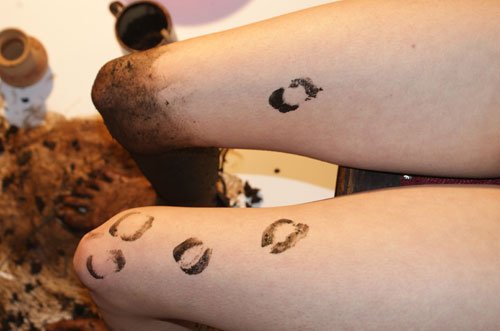
The creations of Roman Dziadkiewicz go far beyond traditional forms of art. The artist operates on the border between artistic and social activities. His projects may take the form of a workshop (Thought Workshop, 2004), surveys (e.g. What is important and what is the most important since 2000?), texts and manifestos (e.g. Doing Nothing Manifesto, 2004) or long-term research studies.
Dziadkiewicz’s activities are an ongoing process – an experiment, where the artist refrains from the privileged position of creator, taking the role of a researcher, observer or research object. The subject of the research is the various possibilities of an artist’s being in the oppressive cultural structure, the progressive disintegration of a piece of art in the context of political, social and economic issues. Roman Dziadkiewicz is mainly interested in the dichotomy of reality and fiction.
The project in Garston entitled Bridges (tools to overcome limitations in emotional involvement) will be an attempt to build up experimental links between individual, private experiences and group experience, and it will be an attempt to stand up to indifference and its opposition (hidden, historical, forgotten, potential, dead, longed-for, shameful) to emotional involvement (in private and/or public affairs). Indifference is the first and troublesome perspective which defines attitudes towards Garston (and similar places) from outside – from the perspective of the artist/tourist. The objective of the events is to overcome powerlessness or at least to construct a few abstract and metaphorical (model) bridges towards involvement. The artist explains that Garston with its social and cultural locality, history, topography (old docks, mud, interpenetration of decreasing industry with shyly returning nature), is compared with singleness, individual character and histories of individuals invited to the project. The artist also has the ambition to create yet another link – between the macro and micro scales.
The project will take the form of a series of discrete actions, interventions, micro-performances and observations, performed together with the Garston community which has been invited to co-operate.
Dziadkiewicz Roman studied at the Pedagogy Academy in Opole and at the Painting Faculty of the Art Academy in Cracow (graduation work in 1997 under Prof. Stanisław Rodziński). He practises an interdisciplinary approach operating on the border between artistic and research traditions. He is also an exploratory artist in the social space – as an activist and animator of cultural and social life. He was a member of an initiative group which founded the SAOZ Artistic Association Health Care Centre and foundation 36,6. He lives and works in Cracow.
He has presented his works at individual and collective exhibitions in Cracow, Warsaw, Kiev, Stockholm, Cleveland, Dresden, London, Budapest and elsewhere. Some selected artistic and social projects: 2001 The Eating Holiday – social space; 2002–2004 The Camel Workshop – road performance; 2002 Dom (Home) – co-creation of a collective place for living, art, work and play, Kraków; 2002 Money – not funny (Pieniadze szczescia nie daja), workshop and exhibition, Manhattan Gallery, Lódz; 2003 – 2004 The workshop of thinking (with f36,6), Malinowe, Mumbai, 2004 Switzerland in the Middle East (the workshop project accompanied the Symposium ‘Geography of changes’), Kunstmuseum Bern, 2005 SFX: Publicznosc, research and art project, Poland / Germany (and group exhibition at Westfälischer Kunstverein, Muenster); 2005 Robinson Crusoe or Stranger than Paradise, Spaces Gallery, Cleveland (OH), 2006 Imhibition, National Museum, Cracow, 2009 C-D-G, National Art Gallery Zachęta, Warsaw.
July 2009
Elżbieta Jabłońska, Cooperation: Przemysław Paszek.
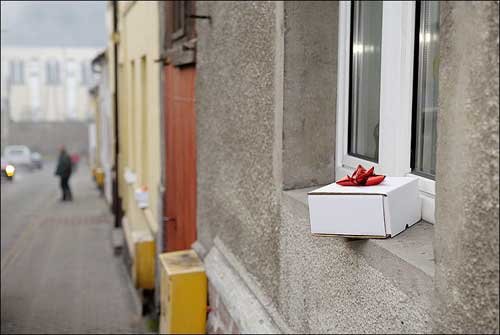
It is a difficult task to describe Elżbieta Jabłońska’s artistic works. Her creations are often defined as post-feministic. This term however fails to indicate all the important aspects of her projects. Post-feminism sounds serious and grave, while her projects are full of little pleasures, simple, daily events. The artist in her works uses and transforms cultural stereotypes and clichés associated with woman and womanhood. She plays with them in an intelligent game, full of humour and warmth. One work of high importance for Jabłońska’s creative concept is her work from 2002, Supermother – a series of photographs, self-portraits with the artist dressed up as pop-culture superheroes – Superman, Batman and Spiderman. This work was an ironic comment on the situation of women in Poland – highlighting their strong attribution to the private, household zone due to motherhood’s physiology, while, on the other hand, work enhances their status. What can be wrong in being a Supermother – an ordinary woman who successfully combines her motherhood with a professional career? “The world is going round due to the Supermothers and not due to Supermen, but the efforts of Supermothers are not much socially appreciated and recognised. They are not stunning or spectacular, and the scene of the efforts is their private space (...)". Isn’t it high time for dethronement of the contemporary male heroes?
Can art be created out of banality and ordinary life? Art without huge, blow-up ideas? Jabłońska, making her socially involved art successfully, avoids pathos and presentation of the world in black and white. She manages to avoid typical traps – demagogy and social journalism. She speaks about important things in a simple way. As the Supermother she is the mother of the whole world – she helps, organizes vacations, cooks and makes presents. But is it possible to help everybody? In contemporary society the typically womanly works are embarrassing and enclosed in the four walls of private homes, marginalised. The artist makes them visible and enhances their status through art. An interesting aspect of her endeavours is the spectators’ responses to her projects. Very often they reveal feelings which are invisible, hidden in the course of everyday life.
Elżbieta Jabłońska graduated from the Fine Arts Faculty at the Copernicus University in Toruń. Her art is installation, performance and artistic events. In 2002 she was nominated for the Paszport Polityki award in the field of fine arts, was awarded the title Artist of the Year by readers of the daily newspaper Gazeta Wyborcza in Bydgoszcz, and in the same year Newsweek Polska recognised Jabłońska as one of the most promising individualities among young Polish artists. In 2003 she won the first edition of a competition organised by Deutsche Bank Culture Foundation and Zachęta National Gallery – SPOJRZENIA 2003. Her works have been presented in the USA, Estonia, Finland, Hungary, France, Spain, Germany, the Czech Republic, and Slovenia. She lives in Bydgoszcz and works in Bydgoszcz and Toruń.
August 2009
Dorota Buczkowska, Fountain
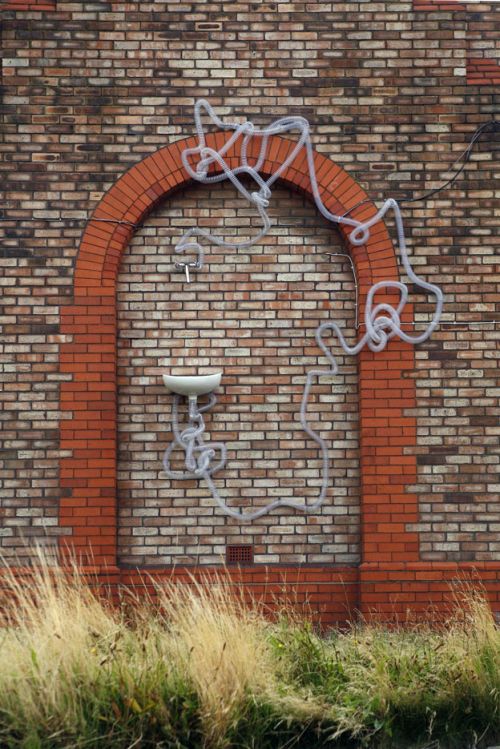
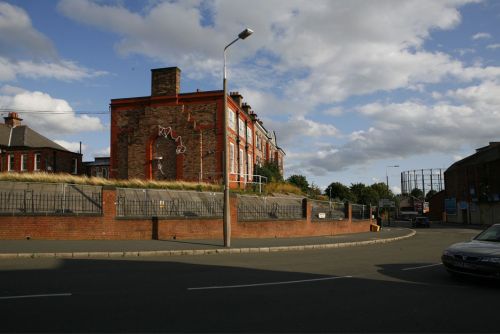
Dorota Buczkowska is interested in the circulation as a system of mutual relations inside the human body and also its relations with its immediate surroundings. In her works, the artist highlights similarities between the human body and city infrastructure. In Buczkowska’s graphic arts, drawings and installations the arteries are transformed into water supply pipelines, while the organs are transformed into washbasins, sinks, toilet seats, and taps. Roads and streets are formed as veins. Merging and mechanical circulation are occuring. What is alive is transformed into artificial; what is artificial changes into living objects. The urban infrastructure and the Internet is entwining around the Earth, creating an artificial blood circulation system for people and information. Man has created this world in his own image and likeness. May we claim that the infrastructure is subordinated to man? Or maybe it’s the other way round, and man is subordinated to the infrastructure, falling victim to his own invention?
The artist’s works, unsettlingly, don’t provide any answer. They only show the world of mutual inter-relations which make up the living system in the triangle of man-architecture-city.
“Fountain” in Garston will be an extension of everyday circulation, the daily flow of machines, people, energy, it will reveal the invisible in the forgotten space under the bridge. Water may be associated with purification, with time flying by; it is reminiscent of a river which used to flow there. For passers-by the sculpture organically merging together with the structure of the bridge will become a component in reducing its oppressiveness, if only for a short time.
Dorota Buczkowska graduated from the Faculty of Sculpture at the Art Academy in Warsaw (graduation work under Prof. Grzegorz Kowalski) and Gender Studies at Warsaw University. She makes video, installations, graphic arts, and drawings. In the period 2002-2003 she completed an internship in the prestigious National Centre for Contemporary Arts, Villa Arson in Niece. She has participated in important exhibitions of new Polish art, such as Novart.pl in Cracow, or Clubcube in the Ujazdowski Castle in Warsaw. She has had the opportunity to present her art in collective and individual exhibitions in Finland, Paris, Vienna, Amsterdam, the Art Centre in Albi, France, Le Parvis Art Centre, and in the Polish Institute in Paris. She received scholarships from the French government and Kulturkontakt in Vienna. Her awards and internships: 2004 Air Vienna Programme, resident in Vienna; 2003 scholarship from the French government (under internship in the Art Academy), Centre for Contemporary Arts, Villa Arson, Nice; involved with Czarna Gallery in Warsaw. She lives and works in Warsaw.
September 2009
Łukasz Jastrubczak, Eclipse.
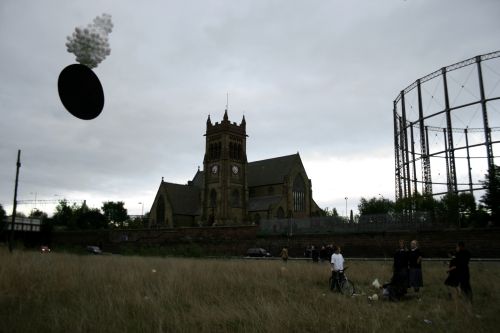
Łukasz Jastrubczak is a young artist with a very clearly defined view of his creations. “In my activities everything makes a whole and is interdependent. My inspiration comes mainly from movies. I like air a lot” – says Łukasz about himself. Łukasz is interested in the surrounding reality, in actions in it and on it. The artist observes it through the filter of culture – movies which he remembers, artists who are fascinating for him. In a discreet way he mystifies reality. Simple ordinary situations in a city space are a starting point to create narration, to shape his own quasi-fiction based on objects and minimalist interventions. In a subversive way his stories refer to classical works in cinematography, pop-culture and modern art history. They are like frozen frames from movies, prolonged in time. Łukasz doesn’t intend to define the role of an artist in society. The meaning of his works are developed in contact with their place of appearing.
“Many of my works are about the city space, but the final result of them is still unknown. I have only set up the beginning... Not all of my activities have been completed. Sometimes I only catch, mark and leave. It’s a game. One big line following a direction” – Łukasz adds. Jastrubczak doesn’t close his activities; he leaves the situations open. He responds to surroundings and to changes around him. His ephemeral interventions are a break from reality. They make obvious things start to look different than at first it seems.
Łukasz Jastrubczak makes drawings, video actions, objects, and animations, runs workshops for children, designs websites and composes electronic music; he is a member of the Połącz Punkty (Link the Dots) music group. Some individual exhibitions were: 2009 - "White video", ZAK BRANICKA Gallery, Berlin; 2008 - "Film noir", CSW Kronika, Bytom; 2007 - "01", CSW Kronika, Bytom, and collective exhibitions: 2008 - "Nie ma sorry" (No Sorry), Contemporary Art Museum in Warsaw; "Establishment jako źródło cierpień” (Establishment as the source of suffering), CSW Warszawa; 2008 - "Manual CC", CSW Warszawa, CSW Kronika Bytom, Uqbar Berlin; 2008 - "Something must break", Off festival, Mysłowice; 2008 - "Helsinki by night", TaiK gallery, Berlin; "Lighthouse Ankara", main railway station, Ankara; 2007 - "Umpolen", Freiraum MuseumsQuartier, Vienna. He lives and doesn’t work in Warsaw.






 BIP
BIP